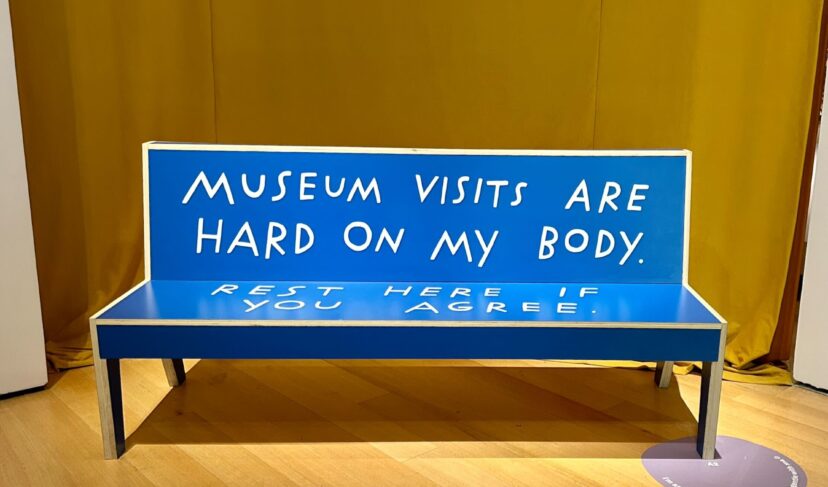An Accessible Workplace Invites People with Disabilities
Simple changes can make a big difference for employees with disabilities

For those with disabilities, access isn’t always easy or readily given. People with disabilities face roadblocks with processes that seem simple to most. One such roadblock is employment. Finding employment and even seeking reasonable accommodations once employed can be a struggle.
According to the U.S. Census Bureau, 42.5 million Americans have a disability. This accounts for 13% of the population. However, the unemployment rate for people with disabilities is 7.2%, double that of people without disabilities. It’s much harder for people with disabilities to find and maintain employment.
Many employers fear hiring those with disabilities because of cost, or they may lack knowledge of specific conditions. Due to this inexperience, employers may avoid hiring people with disabilities. Lack of awareness or fear of accommodations should never be barriers to employment. Dispelling these myths is the first step toward creating a more inclusive workforce.
A Job Accommodation Network survey found that the benefits of reasonable workplace accommodations far exceed their costs. The report also states that many disabled employees are veteran problem solvers since they often overcome daily obstacles in a society not designed for them.
The ADA defines a reasonable accommodation as “a modification or adjustment to a job, the work environment, or the usual hiring process.” Such changes give disabled individuals an equal chance to perform at their jobs, like those without disabilities. The ADA cites a few categories for these adjustments. They are: physical changes (like wheelchair ramps), adaptive tech (like screen reader software), accessible communication (like sign language interpreters), and policy enhancements (like service animal policies or work-from-home arrangements).
Accommodations are not always costly and, in some cases, only involve minor changes and very little expense. The Job Accommodation Network reports that 56% of surveyed companies said the accommodations made cost nothing to implement. Another 37% reported a one-time cost. The remaining 7% said the changes caused recurring costs. Often, the benefits of accommodations far outweigh the costs. They lead to happier employees, better retention, improved work quality, and a more accessible environment.
Here are some ideas for low or no-cost changes to the company culture:
Organic Hiring Process
A more organic job interview process will help to comfort all interviewees. As the employer, if you can’t ask about disability due to legal reasons, you can help individuals feel comfortable to bring it up early. Positive encouragement and a normalized view of disability can help everyone feel accepted. After you make the job offer, ask people what they need to perform at their peak, regardless of any disability.
Disability and Inclusion Training
Disability and inclusion training is a great way to involve everyone in promoting an accessible environment. It will also raise awareness among those not versed in the subject. There are many online resources, both paid and free, that companies can use to ensure their employees understand how to act inclusively. Disability etiquette is very important, but not everyone knows it. Sensitivity training can help ease the burden on disabled workers.
Flexible Working Arrangements
Individuals with disabilities may face barriers to attendance. These include, but are not limited to, work-time appointments and transportation issues. A no-cost way to make your workplace more inclusive is to allow hybrid or remote work, flexible schedules, and more frequent breaks.
Promoting Technological Accessibility
In the digital age, there are so many ways to make the daily use of technology more inclusive for everyone in your company. Employers should aim to provide accessible platforms and assistive tech to anyone who needs them. This can include screen readers, ergonomic accessories, and captioning technology.
Continued Conversations
Finally, it’s key to keep accommodations conversations going. Adaptability to disabilities is key for employee retention and happiness. A quick check-in can ensure current accommodations are working for employees. Regular conversations, especially in one-on-ones, help normalize accommodations and disability in the workplace. They also show employees that the company is committed to making the workplace accessible for them.People with disabilities face many obstacles in life. But, employment shouldn’t be one of them. By using the strategies outlined above, employers can overcome barriers and foster a diverse and supportive environment. At Tamman, we are committed to advancing digital accessibility solutions that empower ALL individuals. Embracing these practices enhances the quality of life for employees and aligns with our mission to champion universal access to information and opportunities. Let us guide you in transforming your workplace into one that truly supports and values every individual.





